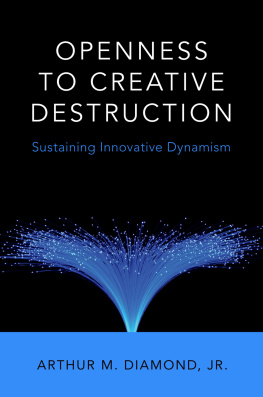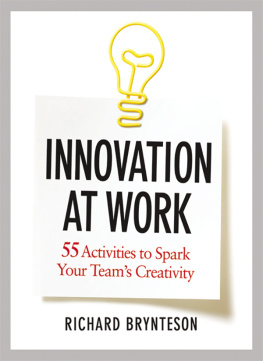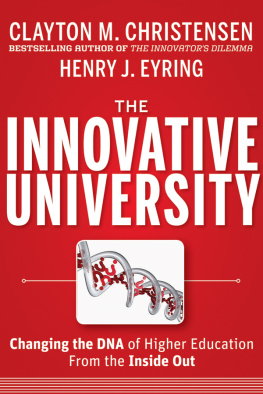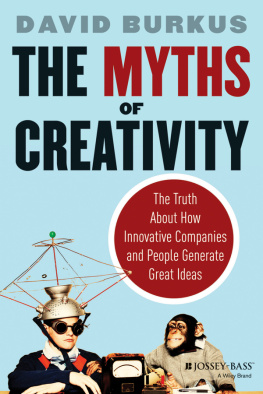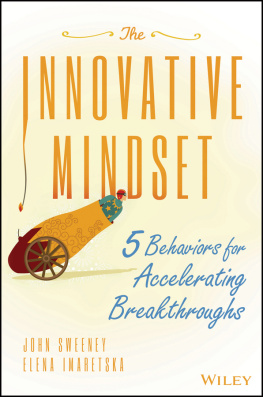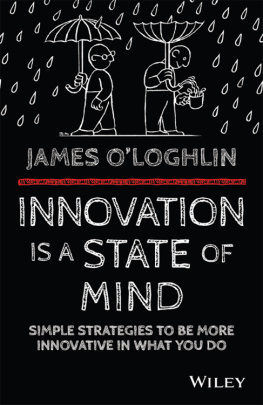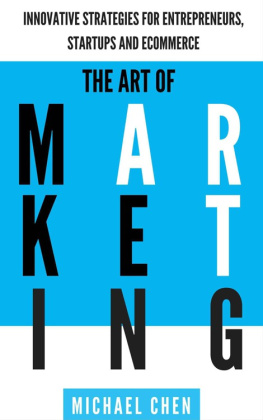Openness to Creative Destruction
Creative destruction is the mainspring that animates growth and prosperity. Few people fully understand creative destruction; fewer still can explain it. In this remarkable book, Diamond uses compelling stories to construct the case for creative destruction, extending Schumpeter's deep insights into the 21st century.
Michael C. Munger, Professor of Political Science, Duke University and author of Tomorrow 3.0: Transaction Costs and the Sharing Economy, and other works.
Entrepreneurial innovation delivers great benefits to mankind, yet the true innovator is often despised and disrespected by the prevailing orthodox establishment. Like Prometheus they create the heat but sometimes pay dearly. This book shows why we are no longer walking around or riding on the backs of beasts but have the benefits of automobiles, planes, and everyday conveniences such as indoor plumbing, cell phones, and the world wide web.
Peter Boettke, University Professor of Economics & Philosophy at GMU
Art Diamond has written a fantastic book exploring how strong property rights, not innovation systems, should be the basis of modern innovation policy. He has done a great job in setting out the case for a classical liberal approach to innovation and technology policy, and carefully counters many of the common arguments supporting interventionist policy models. The book is full of lucid and compelling case studies and will be popular among innovation scholars and policy-makers.
Jason Potts, Professor of Economics, Royal Melbourne Institute of Technology (RMIT).
Openness to Creative Destruction is first and foremost a great read. Much of the book is devoted to skillfully chosen accounts of usually successful, but occasionally unsuccessful, entrepreneurs to illustrate the author's arguments. At times these accounts made me feel like I was reading a series of short adventure stories. This use of examples to make the argument for the central role of the creative entrepreneur in generating innovation, and the benefits that can accrue to society from creative destruction, makes the book very accessible to the intelligent layman or beginning student, while its serious ideas will be of interest to professional economists and sophisticated policymakers. The theoretician of entrepreneurship or innovation will find it a one-stop source of real-world examples. I plan to make it required reading in my growth and industrial organization classes.
Luis Locay, Associate Professor of Economics, University of Miami.
Diamond revives the lost art of business history in the tradition of Alfred Chandler to write a definitive history of American entrepreneurship. He uses economic theories to organize his encyclopedic knowledge of entrepreneurial success stories. Unlike books by successful entrepreneurs which recount why they personally succeeded, Art looks for themes which are common to these success stories. He provides modest policy suggestions to improve the environment for these entrepreneurs to thrive.
Aloysius Siow, Professor of Economics, University of Toronto.
Diamond shows us that entrepreneurial innovation is not just the best way to make a better world. It is the only way. If we care about our fellow humans, then we had better do what we can to enable entrepreneurial innovation. Diamond shows with an unusual depth and breadth of scholarship that the most important thing we can do to promote innovation is to let entrepreneurs test their impossible ideas in the free market. Diamonds book is a gem. Grab it, read it, learn from it.
Roger Koppl, Professor of Finance, Syracuse University. Author of Expert Failure, and other works.
Productive entrepreneurship is not automatic. Art Diamond's new book brilliantly illustrates how free markets allow entrepreneurs to innovate in ways that disrupt economy activity and, crucially and contrary to popular fears, ultimately reorganize production in ways that allow us to live longer, richer, and more flourishing lives.
Benjamin Powell, Professor of Business Economics, Texas Tech University. Author of Out of Poverty, and other works.
For tens of thousands of years, before the Age of Innovation, human beings merely survived by hunting, gathering or tilling, and lived in caves or dirty, squalid huts. In marked contrast, the average person alive today enjoys a standard of living and access to entertainment, medical services, travel, and communications technology that our ancestors would have regarded as miraculous. Art Diamond skillfully shows how we got the many wonders we take for granted everything from indoor plumbing to SUVs to iPhones by telling the stories of the determined tinkerers, iconoclasts and visionaries who wouldnt take no for an answer. They succeeded because they were willing to wage the good fight and because they could draw on flawed but ultimately supportive legal, cultural and economic institutions. Diamond also addresses the question of whether the Age of Innovation has run its course, and he provides a timely warning about the dangers that current political and intellectual forces pose to the many potential innovations yet to come. The Age Innovation may end, but whether it does is largely in our hands.
George Bittlingmayer, Economist, Angel Investor, and Professor Emeritus, University of Kansas.
Walt Disney has been written about as an artist and an entrepreneur. The central virtue of Art Diamonds book is that he not only writes about Disney in both roles, but he also explains how Disneys success in each role strengthened his success in the other.
Michael Barrier, animation historian. Author of The Animated Man: A Life of Walt Disney, and other works.
In writing Openness to Creative Destruction, Art Diamond has penned a timely and compelling discussion of innovative dynamism, words he chooses to describe the vital wealth-creating features of the US economy. As the books title suggests, Diamond, like Joseph Schumpeter before him, using lots of data and strong anecdotes, explains how innovationthe discovery and implementation of new products, services, and processes for providing themdrives prosperity. Dynamism, though not automatic but sometimes constrained by government regulation, relates to how growth, change and search for future equilibriums are features of US markets. A strongly written and deeply documented book, Openness deserves to be read by all who want a better understanding of how the US economy is performing now and how future performance can be improved.
Bruce Yandle, Dean Emeritus, Clemson University College of Business & Behavioral Science and Distinguished Adjunct Fellow, Mercatus Center at George Mason University.
In this excellent book, Arthur Diamond offers a spirited defense of the open and free market system, saying that many of the complaints against capitalism are based on (1) mistakenly conflating free market competition with cronyism, and (2) grossly under-appreciating the innovative entrepreneurs ability to solve problems in all sorts of areasin the past and in the future. One of the central claims of the author, based on his understanding of the epistemology of innovation, is that breakthrough entrepreneurs will need to be self-funded, which implies a continuing need for open and competitive markets if we are to enjoy in the future the benefits of innovative dynamism, as we have in the past.
Young Back Choi, Professor of Economics, St. Johns University. Author of Paradigms and Conventions: Uncertainty, Decision Making, and Entrepreneurship

